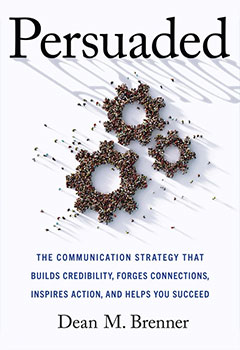Meetings are a ubiquitous part of the modern office, across all industries. Think of meetings as a company’s blood flow: When they are well-run, ideas and decisions flow through them like oxygen through veins, invigorating every aspect of the business, stimulating new ideas and pushing strategy forward, making it healthy and strong. But poorly run meetings constrict that blood flow. They create blockages, stifle innovation and make the business sluggish and unhealthy.
When I hold workshops with my clients, I always start with the question: How much of your time in a typical week is wasted in bad meetings, conference calls or poorly communicated messages? I’ve never had anyone say less than 20%, and I sometimes hear up to 80%. On average, I hear around 50%. That’s a huge problem.
Worse, a bad meeting can be expensive. Think about how much each person in the room gets paid by the hour. When you’ve added up that hard dollar cost, then consider the opportunity cost of what the meeting is taking people away from: finalizing the month’s numbers, selling your company’s product, developing the next big innovation. It all adds up.
So how do you create healthy, productive, engaging, cost-effective meetings?
The key is communication — concise, clear, engaging communication. And there are a few strategies you can wield as both a leader of meetings and as a participant in them.
When you take charge of a meeting, keep these tactics in mind:
- Respect your attendees’ time. Start on time and end on time … or even a few minutes early! Leave a break between the end of your meeting and the start of another one. Everyone will appreciate it, and every meeting will be better for it.
- Get to the point. Spend a few minutes before the meeting thinking about your message. What do you want to get across? What are you asking for? Make sure you say it directly, clearly and early on. If not everyone in your audience can articulate what the point was, your meeting has been a failure.
- Consider who needs to be there. If it’s not essential for someone to be in attendance, let them off the hook. We all have too many meetings to attend; be the person who takes things off other people’s to-do list.
- Consider what your audience actually needs to know. Focus on two areas: what you need your audience to know (that’s your presentation); And what your audience might want to know (that’s your Q&A). And everything else can be set aside, making your meeting more efficient.
- Set the agenda ahead of time. This one is easy, and should always be in place. Give them a clear sense of what they are walking into, a bullet-point agenda and/or handouts of key information.
- End with clear action items. What needs to be done, who needs to do it and when does it need to be accomplished? This may be the most crucial step to having a meeting pay off.
These steps will help you lead better meetings. But how about when you are a participant? Attendees can help make meetings more productive, too.
- Turn off your cell phone or other devices. Just as you want a speaker to respect your time by starting and ending on time and getting right to the point, you as a listener should eliminate any potential distractions. After all, one of the biggest reasons meetings are a waste of time is that we are all too busy multitasking to pay attention.
- Take notes. Not only does this show the speaker that you are engaged and actively listening, it will help you remember key information later on.
- Ask questions. If you don’t understand something, chances are others were confused too. Just make sure that you are asking a meaningful question, not just filling space.
One last list… if your organization’s meetings are feeling inefficient, they probably are. And it may be worthwhile to change things up in a few ways:
- Change roles. Let someone who is typically a leader step down and someone who typically stays in the background step up. A change in roles will challenge everyone in new ways.
- Change venue or configuration. Do you always meet in the same room? Do you always sit in the same place? Just moving to a new conference room or switching up the seating can make people feel newly energized.
- Include someone new. This could be someone from another team or an outside consultant. A new perspective on a problem can be invaluable. And they might ask the obvious questions that those close to the topic can’t see.
Meetings are a fact of life. But bad meetings don’t have to be. Think of them as opportunities to wield your skills as a persuasive communicator. Set clear goals, respect your colleagues and embrace new ideas. You’ll be amazed at how powerful and productive things can be.
Good luck.

—
Does your team:
– Overwhelm the audience with too much detail?
– Make things too complicated?
– Fail to ask for what they want or need?
Does your organization:
– Waste time because of poor internal communication?
– Take too long to make decisions?
– Struggle to clarify and frame discussions?
Do your leaders:
– Exhibit poor executive presence?
– Lean on incomplete communication skills?
– Fail to align the organization?
We transform teams and individuals with repeatable toolsets for persuasive communication. Explore training, coaching, and consulting services from The Latimer Group.
Looking for more from The Latimer Group?






Comments